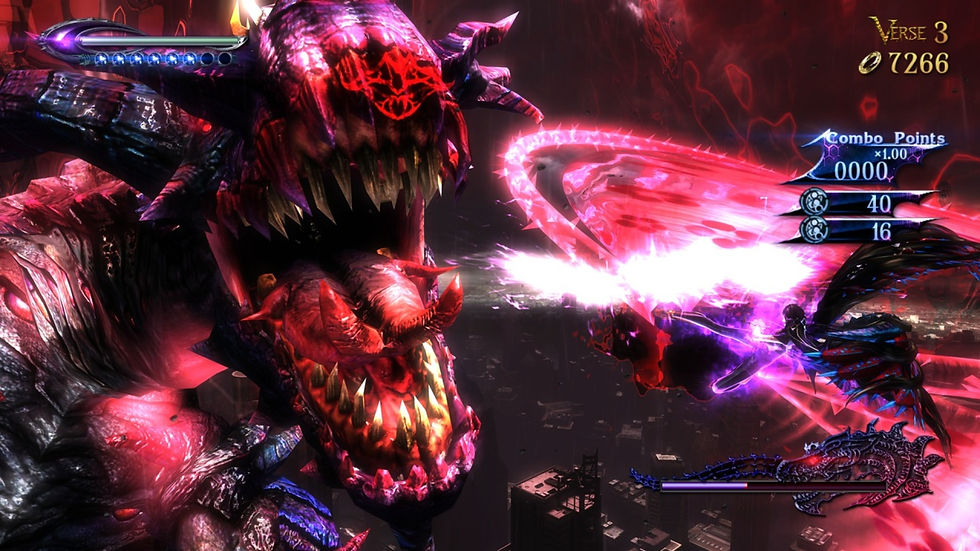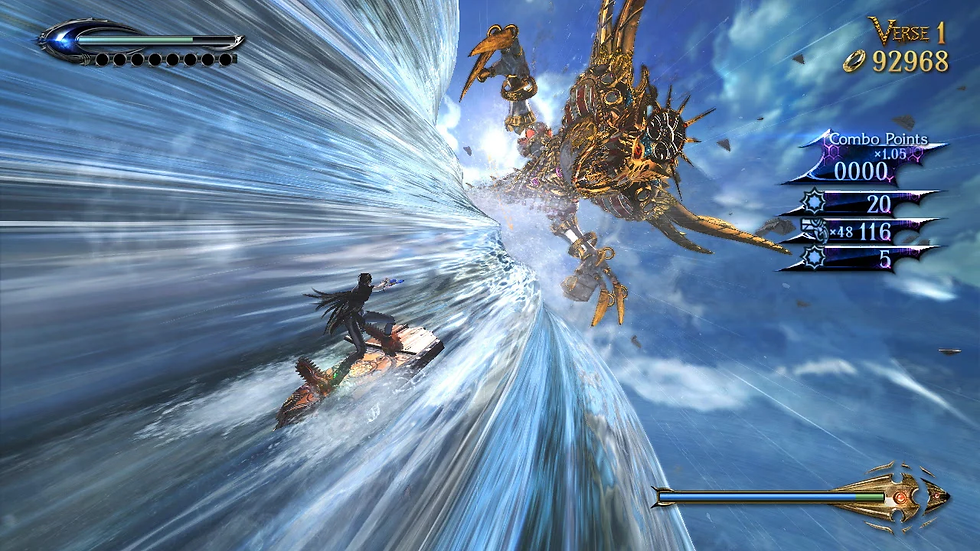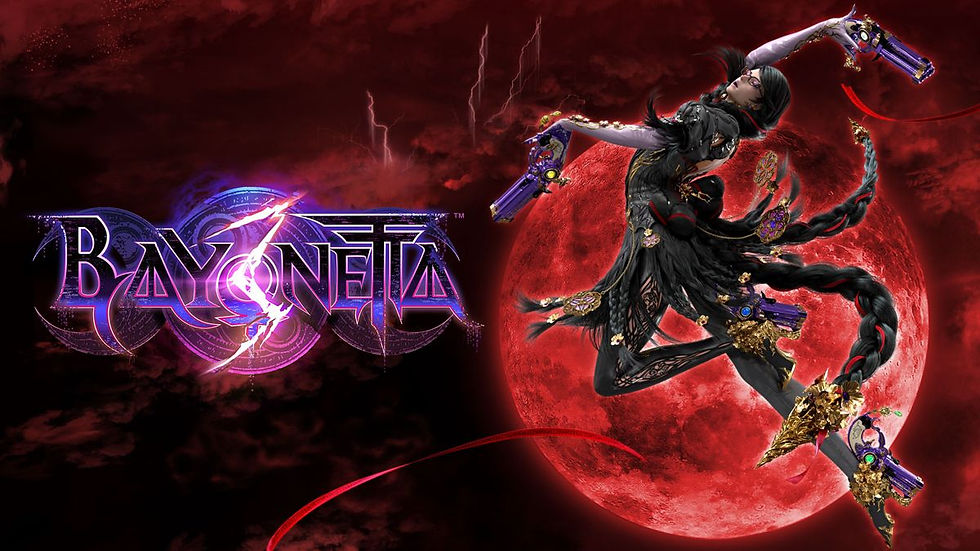Put It in the Louvre: Bayonetta Is Art, Actually
- Kelly Gowe
- May 28
- 4 min read
Updated: Jun 4
There is a moment in Bayonetta 2 where you are standing on the wing of a fighter jet, heels loaded with bullets, hair transformed into a dragon, and the sky is basically on fire. You are mid-combo, dodging in slow motion, watching the world stretch and bend while your screen melts with colour. And in that exact second, you realise something. This is not just a game. This is art.
Not in the vague, “games are art” kind of way. Bayonetta is art in the “put it in the Louvre” kind of way. The “hang it next to the Winged Victory and dare anyone to question it” kind of way. Because this series, chaotic and unapologetic and dramatic to the point of theatre, is doing something most games would not even attempt. It uses style as substance. And it never once asks for permission.
The first Bayonetta dropped in 2009. PlatinumGames, directed by Hideki Kamiya, introduced something loud and proud into a space dominated by brown shooters and grizzled men holding guns. Bayonetta was the opposite of what gaming looked like back then. She was all height, sharp heels, and sharper wit. A witch who wielded her hair as a weapon and strutted into battle like the whole world was her catwalk.
This was a game that dared to be excessive. That flaunted it. Where other titles pulled back, Bayonetta leaned in. She was bullet ballet. Opera in combat boots. Everything was fluid and absurd and deeply, deeply intentional. Even the tutorials felt choreographed. Even the menus had flair, all meticulously designed to immerse you in Bayonetta's world.

People love to say “style over substance” when they talk about games like this. But Bayonetta proves that style is substance. The way she moves, the way the world bends around her, the timing of every Witch Time dodge, all of it is precise. It is elegance hiding a brutal edge. Mechanics as choreography. Design as defiance.
Bayonetta 2 doubled down. More spectacle. More surreal boss fights. Bigger hair. Bigger energy. You were surfing jets, summoning monsters, punching angels through stained glass. And yet, it never felt like too much. It felt like exactly enough. Because at its core, Bayonetta is about owning your power. And doing it with heels on.

She does not beg to be taken seriously. She laughs, spins, shoots, and flips her way through every level like she already knows she is the moment. The camera knows it, too. The angles are not about the male gaze. They are about her gaze. She is watching you watch her. She is in control of every frame. That is what makes it feel different. She is not here to please. She is here to perform, and her confidence is contagious.
Bayonetta 3 carried that chaos forward. Not everyone loved it, but the maximalism remained. The story went multiverse. The visuals were loud. The demons were massive. It was messy and confident and strange, and that is exactly what a Bayonetta game should be. It felt like the devs had thrown everything onto the canvas and walked away, grinning. And honestly, I respected it.

Because Bayonetta is not trying to be universal, it is not trying to be digestible. It is trying to be itself. In a world of polished, focus-tested games, there is something radical about a series that dares to be camp, be weird, be fluid, and still demand your respect.
And then there is the design. Her hair-based magic. Her outfits that transform mid-fight. Her ability to turn a battlefield into a theatre. It is not just surface-level flair. It is worldbuilding. Bayonetta is her own universe. Her own logic. Her own mythology. You do not just play as her. You enter her world. One where femininity is power, spectacle is sacred, and confidence is the deadliest weapon in the room.
You do not need to understand every plot twist or every summoned demon. You just need to feel it. And you do. Every combo lands like a punchline. Every set piece dares you to blink. Every cutscene feels like a fashion film that stumbled into a war zone. And yet, somehow, it all fits.
Put it in the Louvre. No really. Give her a permanent installation. Let her flip through the air on loop above the tourists. Bayonetta deserves it. Not because she is perfect. But because she is bold. Because she dares to make you feel something. Because she turns combat into theatre and control into freedom.
This is a masterclass in how games can be art without losing their edge. It is not about realism. It is about rhythm. It is about attitude.
Because Bayonetta isn’t just a witch with a gun. She’s a work of art that fights back.
And she’ll do it in six-inch heels, upside down, mid-air, while blowing you a kiss.






